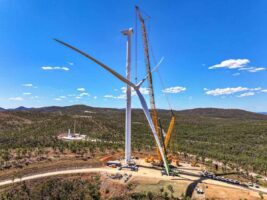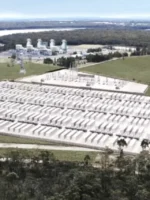Plans for a carbon neutral industrial estate are being touted as the “greenest” in Perth, and will see solar PV and low carbon concrete used to construct a major new logistics hub.
The plan has received financial backing from the Clean Energy Finance Corporation (CEFC), which has committed $95 million to the project being built on the outskirts of Perth.
Through the investment made by the CEFC, the Roe Highway Logistics Park will include up to 2MW of rooftop solar deployed across the development, along with on-site water recycling, low energy lighting, double glazed windows and specialist insulation to reduce heating and cooling costs.
The construction of the logistics hub will also use materials with low embedded emissions, including low carbon concrete that has 42 per cent less embedded emissions compared to traditional concrete.
CEFC CEO Ian Learmonth said the investment was an exciting development in reducing emissions in the construction industry, an otherwise difficult to abate sector when it came to greenhouse gas emissions.
“The construction sector is a significant emitter of greenhouse gases and the lack of low carbon alternatives to traditional building material has so far made it difficult to abate,” Learmonth said.
“Exciting developments in low carbon construction materials are giving us the chance to accelerate decarbonisation, and success in this sector will help spur Australia’s transition to a low emissions economy.”
Learmonth said the focus on low carbon construction materials at the logistics park can play a critical role in influencing supply chains in the construction industry.
“This offers a new pathway to cut emissions from the supply chain, known as scope three emissions, and provides a world-leading example of low carbon options for the industry.”
Ben Lisle, the managing director of Hesperia, the company developing the industrial hub, said that the project will provide an example of the types of measures the property sector can take to undertake low or zero carbon developments.
“We want to be part of the solution in reducing carbon emissions in Australia and the best way to achieve our goal is by finding synergies between our developments and new green technologies and construction methods,” Lisle said.
Building materials, including steel and concrete can have a surprisingly high amount of embedded greenhouse gas emissions, due to the amount of emissions released during their manufacture.
Estimates suggest that the production of concrete is responsible for around 10 per cent of global energy related greenhouse gas emissions, and has received a growing amount of focus as industries look to cut emissions.
The CEFC also noted Australia is utilising as little as 5 per cent of its rooftops for rooftop solar installations, and that much of the spare capacity was in commercial and industrial buildings. Research commissioned by the CEFC suggests that there is capacity for as much as 28GW of rooftop solar across Australia’s commercial and industrial buildings.










